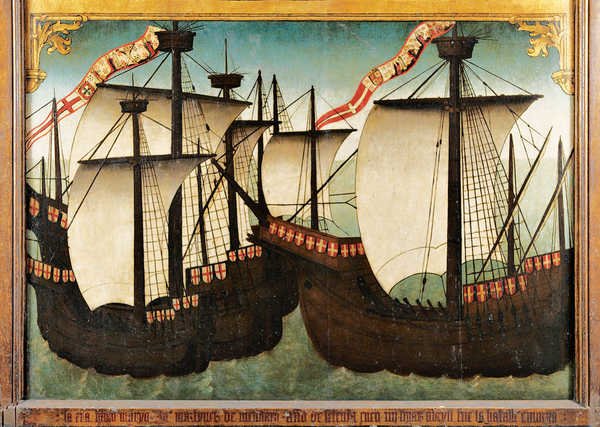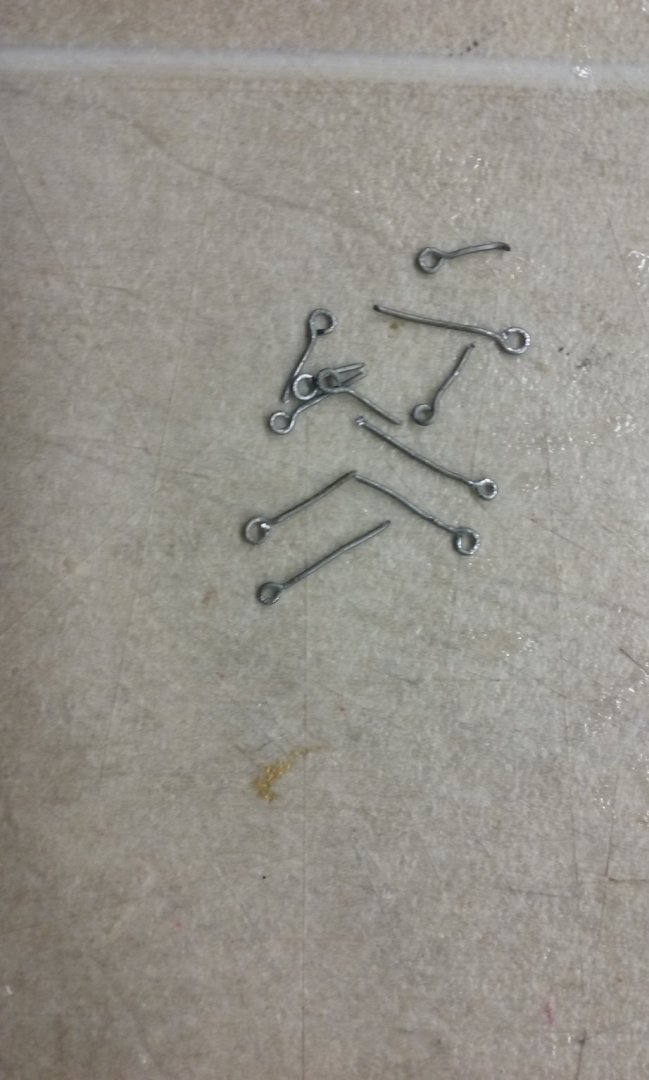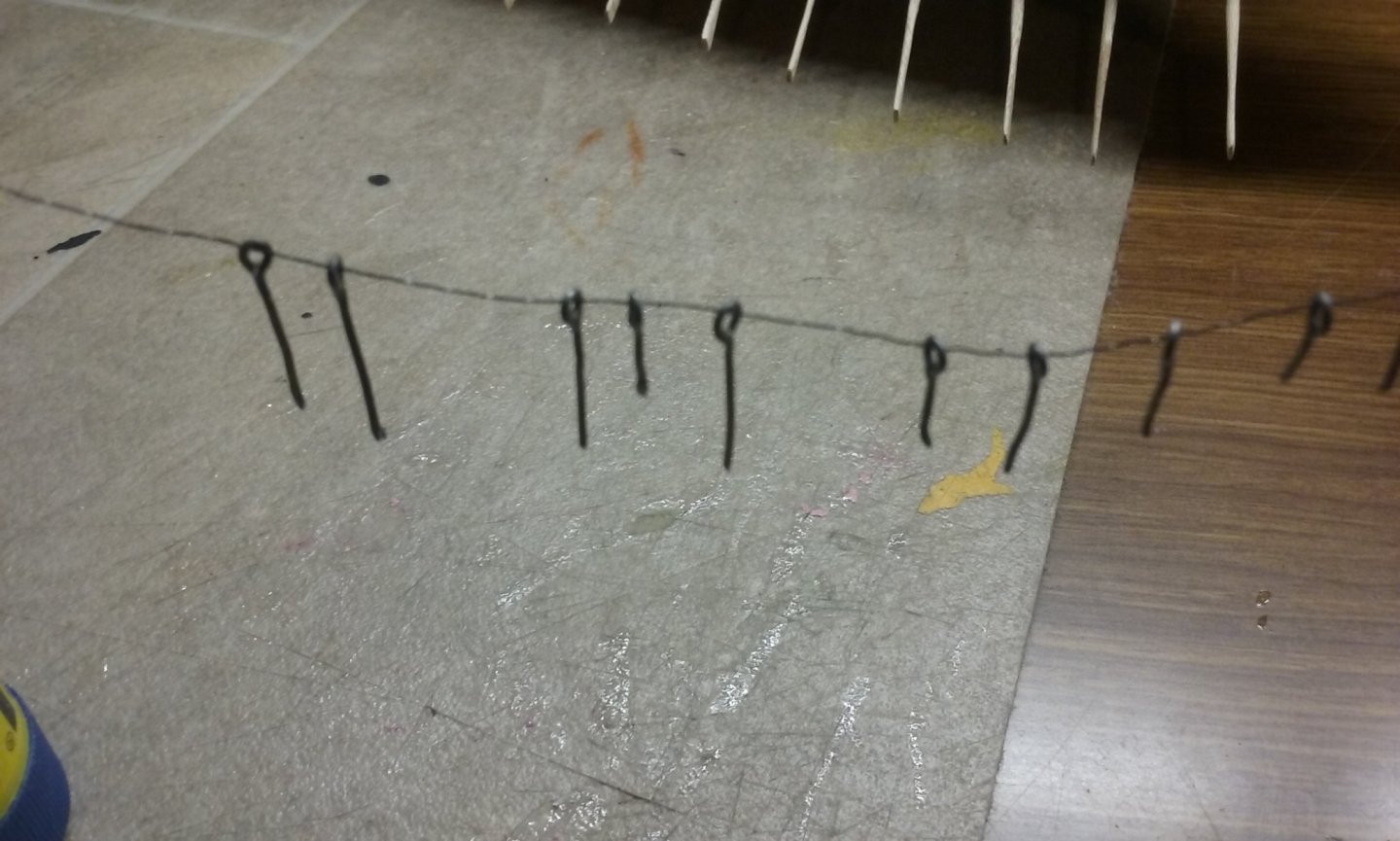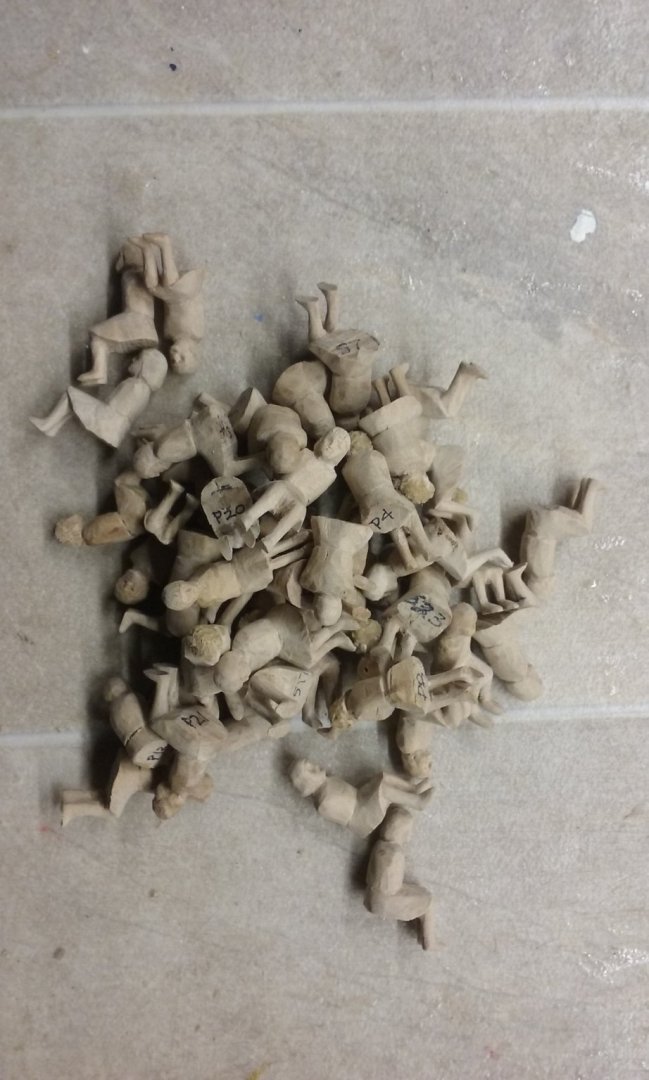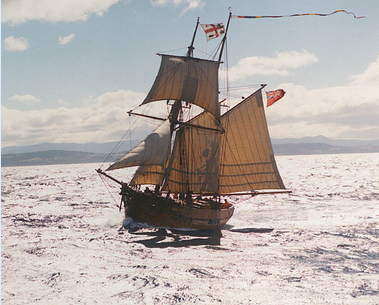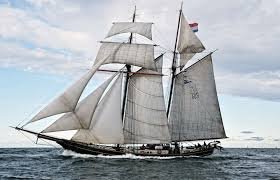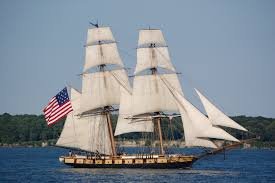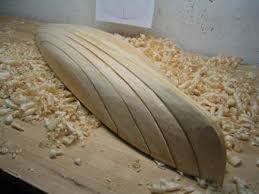-
Posts
7,990 -
Joined
-
Last visited
Content Type
Profiles
Forums
Gallery
Events
Everything posted by Louie da fly
-

HMCSS Victoria 1855 by BANYAN - 1:72
Louie da fly replied to BANYAN's topic in - Build logs for subjects built 1851 - 1900
Thanks, mate. I was just wondering if I'd have been better having my oarsmen printed rather than having to carve them individually - a bit late to be thinking of this, I realise . Anyhow, I suppose it would have been possible theoretically, but probably not practical.- 1,013 replies
-
- gun dispatch vessel
- victoria
-
(and 2 more)
Tagged with:
-
That's a particularly nice looking replica, Shotlocker! And your photos are beautifully detailed. I was just looking through my collection of contemporary illustrations of caravels, but unfortunately none of them are detailed enough to show the deadeyes. However, carracks (such as the Santa Maria) are contemporary with them and might cast a bit of light on the subject. The nearest Spanish carrack in date to Nina is this, dated 1475 - and it should be remembered that in 1492 the ships Columbus was given were rather old so this should be pretty close to the right date. It's from the votive screen at the church of San Pedro in Zumaia, commissioned by Captain Juan Martinez de Mendaro to commemorate his 1475 victory over a Portuguese fleet in the Strait of Gibraltar - see https://www.diariovasco.com/costa-urola/zumaia/tabla-votiva-parroquia-20191215002604-ntvo.html (quite a few pop-ups, unfortunately). This is the best image I can find, but it seems to show rounded triangular "heart" deadeyes similar to the ones you're making so it's likely you're on the right track.
-
Hi Jorge, Did you follow up on this and get a kit? It's a beautiful vessel and makes an equally beautiful model. [edit] Oops! Just found your build log!
-

Is there an easy wooden tall ship out there to build?
Louie da fly replied to thegrindre's topic in Wood ship model kits
That's a good choice, with a gradually increasing level of difficulty. You'll find a lot of build logs for these vessels here on MSW, which should supply you with a lot of tips to help with your own build. What brand of kit will you be getting? -
And now all the oarsmen have been sanded smooth. What someone looking at the photo called a wooden orgy . . . My immediate next job is to make arms for them and then fit arms to each oarsman. This will be a somewhat involved process - not only because half are port and half starboard, but each has to have his arms in exactly the right place to hold the oar so the blade is in line with the others and with those of the lower bank. And I've made ringbolts for the tackle for the shrouds, which are tied down with blocks, not deadeyes. The ringbolts were done with a very wonky set of long-nosed pliers and some garden wire, then a blob of CA to hide the join and look like a swivel for the ring. To be trimmed to shape, painted black and inserted in the gunwale in due course. And I'm taking the time to take stock of where I go from here. I've started writing a "to-do" list sequencing everything yet to be done from now until the model is finished. There's still quite a lot to be done, but I do think I can see light at the end of the tunnel.
-
Hi Michael and welcome. Do you have a model you're thinking of building? Or perhaps you've already started one? If so, start a build log as well. It's a great way to get help and advice, as well as encouragement from the members here. And I get to look at more nice pictures of ship models under construction. Oh, and by the way, there's a very nice topsail schooner in Australia, a replica of a part of our history, called Enterprize. If you don't mind the unusual spelling, she might be worth a look.
-
That's great - but don't forget to start a build log of your own - both for the help and encouragement you'll get from other members as they look at it, but also to help others who may follow you doing the same model. Often your method of overcoming an obstacle will help someone else confronted by the same problem.
-
And when you start your model, please do start a build log. Partly because I love looking at photos of builds, partly because it's the best way to get feedback, help, advice and encouragement. But mostly because I like looking at the pictures . . .
-
Jii, when you've made your decision, you should start a build log - we love to see members' progress with their models and you can get advice from those who have gone before. Don't worry if you feel a bit daunted by it all - it happened to us all when we were first starting out. And don't worry too much about making mistakes. There's a lot of fun and fulfilment to be had, and even though you may be very aware of how it could have been better it's a learning process, and today's mistakes become lessons for your future builds.
-
Photos! We need photos! Seriously, start a build log under "kits" - we all love to follow and see how you're doing, and it's a good way to get tips and advice (and supportive comments!) to help you with your build. A lot of other people have made this model and if you hit any problems, they've probably already encountered them and can help you overcome them.
-
Hi Rick, I love the idea of your building a model of the African Queen (one of my favourite movies, where Bogart got to show he could play something other than a "tough guy"). You might get some help from these threads: and Regarding the live steam, is it your plan to install it in the model? The only problem I can foresee with that (apart from the whole thing of learning how to use live steam without blowing yourself up!) would be whether the relative sizes of the vessel and the engine/boiler would work together. Still, that's all part of the learning process, I suppose.
-
Looking very good, Cri-Cri. How are you planning to fix the lateen yards to the masts? I've just been going through that process myself, and you might like to look at the June 9 post here:
-
Welcome from Ballarat! Well, IMHO that's a good start. There are a few threads with recommendations for beginners' models - have a look at this one - Though I'm not a kit builder, Model shipways and Vanguard seem to be well recommended for beginners, with clear instructions.
-

HMCSS Victoria 1855 by BANYAN - 1:72
Louie da fly replied to BANYAN's topic in - Build logs for subjects built 1851 - 1900
Those guns look amazing, Pat. Beautiful detail. I love the VR monogram. Maybe you should put a matchstick next to one to give a sense of scale. As a complete dunce regarding 3D printing, what do you have to provide to get something like this printed? A 3D CAD drawing, or can you somehow scan an existing real-world original? Steven- 1,013 replies
-
- gun dispatch vessel
- victoria
-
(and 2 more)
Tagged with:
-

Is there an easy wooden tall ship out there to build?
Louie da fly replied to thegrindre's topic in Wood ship model kits
When you say wooden do you mean the original ship is wood, or that you want to make a wooden model? If the former, you might consider plastic kits, which all the parts are already made and you don't have to assemble frames or bulkheads, plank the hull etc etc, with a great saving in time or effort. But if you want to make the model itself out of wood, I'd suggest a solid model, carved from a single piece of wood, or else built up of "chunks"of wood that are then shaped to the curves of the hull. This used to be a very popular way of making models, and can result in a very fine ship indeed. Particularly if you ar portraying a later (i.e. 19th century or later) ship where the hull is completely painted, there's no need to show the planking at all. I don't know if you can get kits that are done this way, or if you have to scratch-build. If you want more than one mast, and square rigged (which I think is often what people mean when they think of a tall ship), can I suggest no more than two masts - a brig, perhaps, or even a topsail schooner? It reduces the work in rigging, making masts, yards, sails etc, but still makes for a very beautiful model, and definitely a "tall" ship. Steven
About us
Modelshipworld - Advancing Ship Modeling through Research
SSL Secured
Your security is important for us so this Website is SSL-Secured
NRG Mailing Address
Nautical Research Guild
237 South Lincoln Street
Westmont IL, 60559-1917
Model Ship World ® and the MSW logo are Registered Trademarks, and belong to the Nautical Research Guild (United States Patent and Trademark Office: No. 6,929,264 & No. 6,929,274, registered Dec. 20, 2022)
Helpful Links
About the NRG
If you enjoy building ship models that are historically accurate as well as beautiful, then The Nautical Research Guild (NRG) is just right for you.
The Guild is a non-profit educational organization whose mission is to “Advance Ship Modeling Through Research”. We provide support to our members in their efforts to raise the quality of their model ships.
The Nautical Research Guild has published our world-renowned quarterly magazine, The Nautical Research Journal, since 1955. The pages of the Journal are full of articles by accomplished ship modelers who show you how they create those exquisite details on their models, and by maritime historians who show you the correct details to build. The Journal is available in both print and digital editions. Go to the NRG web site (www.thenrg.org) to download a complimentary digital copy of the Journal. The NRG also publishes plan sets, books and compilations of back issues of the Journal and the former Ships in Scale and Model Ship Builder magazines.



